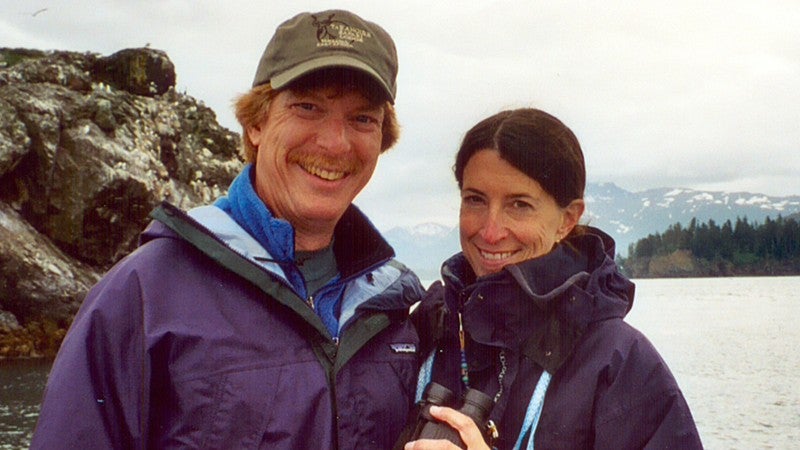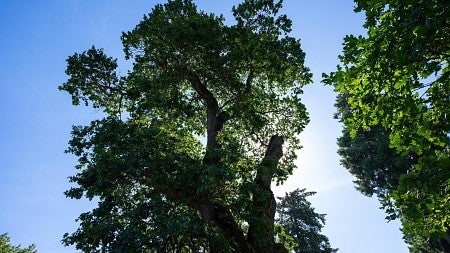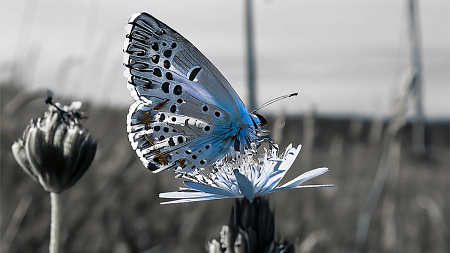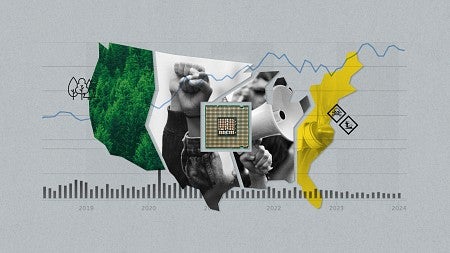
After the Exxon Valdez: Couple’s Love Forged in Environmental Stewardship
Exxon Valdez oil spill cleanup exemplified college sweethearts’ passion for protecting the planet
By Meredith Ledbetter • Photo courtesy Jim Stratton • July 10, 2019
3 min read
Colleen Burgh and Jim Stratton had the kind of love-at-first-sight story you see in the movies—that is, if the movie is an environmental disaster film in which the heroine steadfastly refuses to marry the hero.
March marked the 30th anniversary of the Exxon Valdez oil spill, one of the country’s worst human-caused environmental disasters. Burgh, BS ’79 (biology), managed the cleanup—it was a powerful example of the passion for environmental stewardship that bound the couple together.
Stratton, BS ’79, was drawn to the UO in 1976 to major in recreation and parks management. He joined the Survival Center, a student environmental group; he still remembers that fateful first day of work in 1978 when he saw the woman whose office was adjacent to his.
“Colleen was sitting at her desk, twirling her hair as she talked on the phone,” Stratton says. “I was instantly smitten and we started dating that fall.”
After graduation, Burgh pursued a career in environmental protection back in Alaska, her home state. Stratton followed in 1981, becoming executive director of the Southeast Alaska Conservation Council.
Then life intervened. On March 24, 1989, the Exxon Valdez oil tanker struck a reef in Alaska’s Prince William Sound and spilled 11 million gallons of crude oil.
Burgh, a member of the hazardous management team with the Alaska Department of Environmental Conservation, spent three months working 16-hour days, directing beach cleanup. As the project stretched into years, she became deputy on-scene coordinator and oversaw the department’s entire response.
“It totally challenged her,” Stratton says. “She was the woman ‘behind the curtain,’ determining which beaches got cleaned up next. She was going to meetings every day and arguing for more resources. It was a big administrative job but you also had to understand the nuances of the cleanup, how oil reacts with water.
The Exxon Valdez spill, one of the largest ever in the US, damaged 1,300 miles of rugged, wild shoreline. Photo courtesy of Alaska Resources Library and Information Services“I was so incredibly proud of her and the work she did. It was the defining moment of her career.”
While the couple had promising careers committed to the environment, Stratton was having a hard time convincing the fiercely independent Burgh to marry him.
“It became a bit of a joke,” he says. “I asked her to marry me in some very exotic places, like in the middle of one of the pyramids in Cairo or in the shadow of Mount Kilimanjaro with elephants walking by. She always laughed and said, ‘No.’ Then one Thanksgiving in 1991 I was elbow-deep in stuffing the turkey and tossed out the question, ‘Don't you think we ought to really get married someday?’ To my surprise, she said, ‘Yes.’
“She already had champagne chilling in the fridge!”
They tied the knot the next year in their living room in Anchorage. Stratton later became director of Alaska State Parks. Burgh went on to work for BP, ensuring the company followed the law in extracting oil from Alaska’s North Slope.
Then life intervened again, tragically. Burgh was diagnosed with brain cancer and died in 2014.
Some of her fondest UO memories had revolved around spending spring quarter at the Oregon Institute of Marine Biology. In her honor, Stratton made a significant donation to the UO and OIMB, helping with the purchase of a new research vessel.
“It was such an inspiration for Colleen, studying at OIMB,” he says. “I’m hoping if students can get out and touch the environment, can have an experience with living things in the natural world, they’ll be inspired to make a career out of it.”
Meredith Ledbetter, an MBA student, originally wrote this story for the UO Alumni Association. Visit uoalumni.com/activism for the full text.




